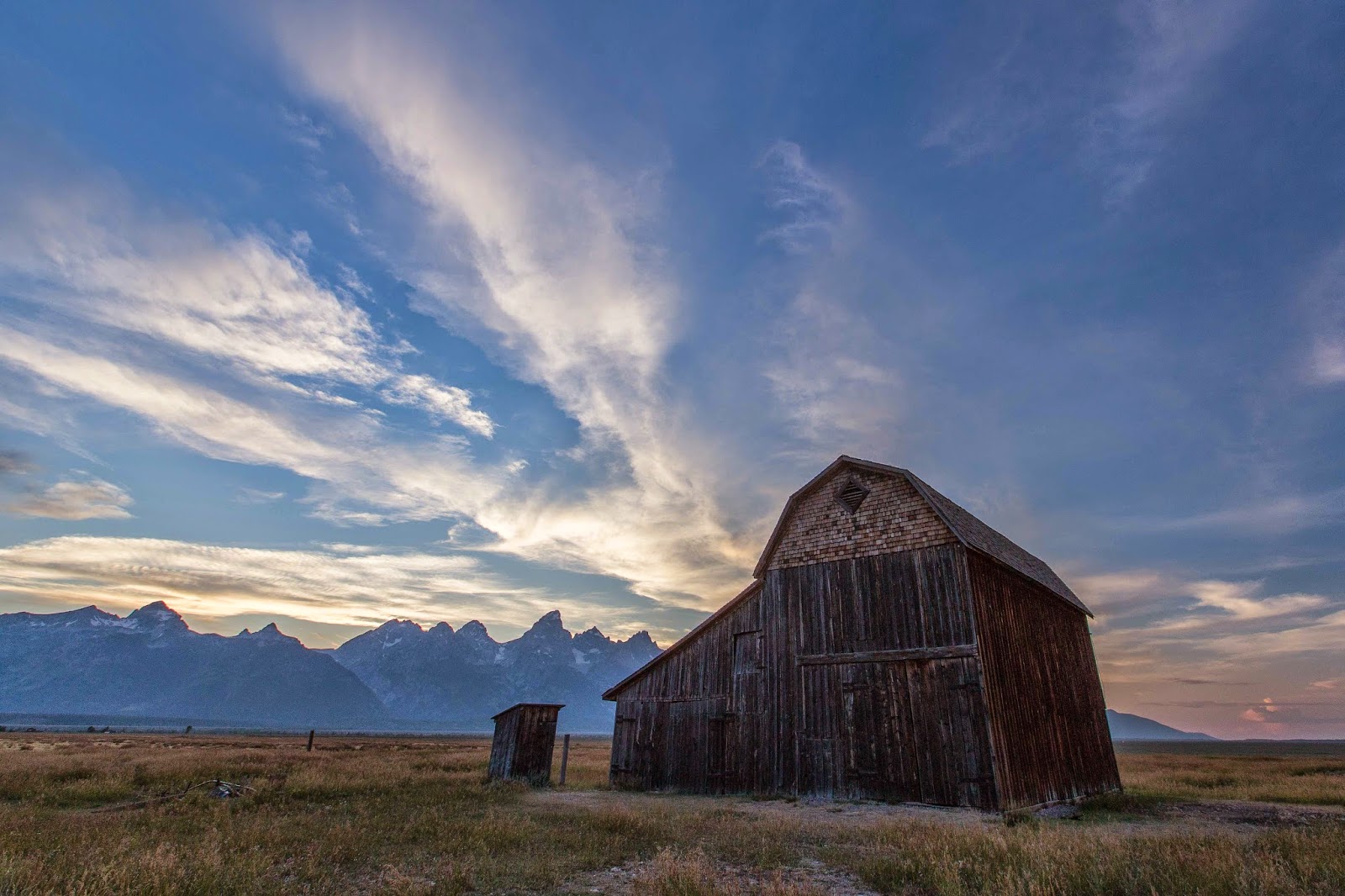The Tetons are probably America's most easily recognized mountains, a row of peaks shaped like shark's teeth. (Note that the Tetons were named for their resemblance to something else, but that is because it was men, no doubt starved for female companionship, who did the naming.) Bounded by steep faults in the rock, the mountains rise sharply along the western edge of Wyoming's Jackson Hole valley.
Hikers who venture into Paintbrush, Cascade, Garnet, Avalanche, and Death Canyons, the main routes into Grand Teton National Park's back country, quickly find themselves amid enormous boulder fields with canyon walls towering up on both sides. Although some of the hikes are daunting, gaining thousands of feet of elevation over only a few miles, spectacular scenery and easy proximity to the road naturally draw many hikers.
The west side of the range is a very different story. Most of the trailheads are miles beyond the highway, at the ends of poorly maintained gravel roads. The trails themselves tend to be much gentler, climbing open slopes that reflect the underlying westward dipping rocks.
Last month I spent five days on this gentle side of the Tetons as part of a geology field trip. Beginning at Coyote Meadows trailhead we hiked up Bitch Creek to the uppermost reaches of Grizzly Creek, just outside Grand Teton National Park (GTNP). It was a lovely spot, though thankfully it didn't live up to its name. No bears, grizzly or black.
Our second camp, about five miles south of the first, was a greater challenge to reach as the trail crossed over two steep ridges and several times disappeared entirely in lush meadows. Picking it up again took sharp eyes and good map skills.
Another advantage of being on the west side of the range is seeing dramatic sunsets over the plains of Idaho.
But best of all are the enormous high meadows that, even in late summer, are filled with wildflowers.
For an even tamer side to the Tetons, here is my now completed quilt made with vintage blocks that I acquired at a Jackson Hole garage sale years ago. I finished piecing it last summer, but waited until I was a little more sure of my skills with a long arm machine before attempting to quilt it.
The blocks were foundation pieced (by hand and by machine) so the finished quilt has a little more heft to it than most quilts. As I mentioned last summer, I used vintage scraps to complete the blocks. The funny thing now is that I can't positively identify all of the pieces I added.
 |
| Teton sunset from Mormon Row |
Hikers who venture into Paintbrush, Cascade, Garnet, Avalanche, and Death Canyons, the main routes into Grand Teton National Park's back country, quickly find themselves amid enormous boulder fields with canyon walls towering up on both sides. Although some of the hikes are daunting, gaining thousands of feet of elevation over only a few miles, spectacular scenery and easy proximity to the road naturally draw many hikers.
 |
| Hanging Canyon |
The west side of the range is a very different story. Most of the trailheads are miles beyond the highway, at the ends of poorly maintained gravel roads. The trails themselves tend to be much gentler, climbing open slopes that reflect the underlying westward dipping rocks.
 |
| Along the trail towards Grizzly Creek |
Last month I spent five days on this gentle side of the Tetons as part of a geology field trip. Beginning at Coyote Meadows trailhead we hiked up Bitch Creek to the uppermost reaches of Grizzly Creek, just outside Grand Teton National Park (GTNP). It was a lovely spot, though thankfully it didn't live up to its name. No bears, grizzly or black.
Our second camp, about five miles south of the first, was a greater challenge to reach as the trail crossed over two steep ridges and several times disappeared entirely in lush meadows. Picking it up again took sharp eyes and good map skills.
The difficulty in finding the trail reflects just how little frequented this area is. Not counting a few people very close to the trailhead, I didn't see a single person outside of our group for the entire five days.
Another advantage of being on the west side of the range is seeing dramatic sunsets over the plains of Idaho.
For an even tamer side to the Tetons, here is my now completed quilt made with vintage blocks that I acquired at a Jackson Hole garage sale years ago. I finished piecing it last summer, but waited until I was a little more sure of my skills with a long arm machine before attempting to quilt it.
The blocks were foundation pieced (by hand and by machine) so the finished quilt has a little more heft to it than most quilts. As I mentioned last summer, I used vintage scraps to complete the blocks. The funny thing now is that I can't positively identify all of the pieces I added.
























